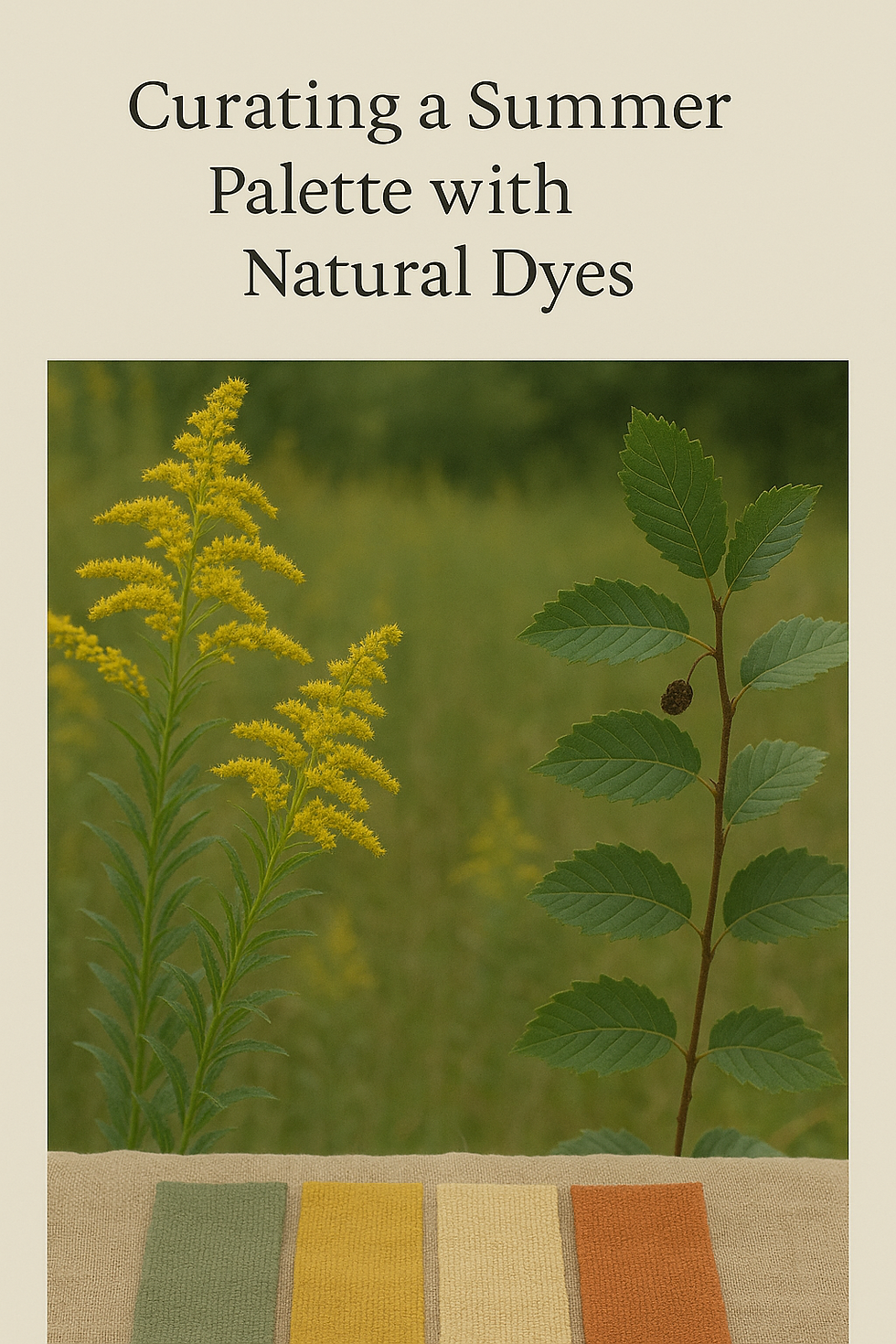Natural Dyeing with Mangrove Tannin - Ceriops tagal
- Suzanne Dekel
- 18 jan 2022
- 4 minuten om te lezen

It took me a long time to find it but the new mangrove tannin extract is everything I hoped it would be, and then some.
Mangrove trees are a group of 80 recognized tree species that belong to the Rhizophoraeae. They form forests on the tropical shores, often where sweet water rivers meet the salty seas. The salt tolerant trees can grow extremely fast (up to 60 cm within 24 hours) so that new trees can root quickly before the tides would swoop them away. Mangrove forests can be found al along the tropical and subtropical latitudes near the equator in Southeast Asian countries like Papua, Indonesia and Malaysia, but also in New Zealand, Australia's coastal regions and South Florida.

The forests with their typical high roots form unique marine habitats where many endangered plants and animals thrive. Deforestation, for timber and highly prized charcoal, has been very problematic, and there is a real economical tension between small farmers who wish to clear mangrove forests to make way for rice fields and shrimp growing, and environmentalists who see the value of the mangroves and try to protect them.
The bark of the trees and their roots are very high in tannin, between 20-40% and were used in the areas they grow in to protect ropes and nets and sails from rotting. In this sense I find many similarities between mangrove tannin and kakishibu, the fermented tannin of unripe persimmon fruits, used for the same purpose in Japan. Both these tannins have distinct antimicrobial, anti fungal and antiviral properties, and it comes as no surprise local communities use mangrove tannin in natural medicine against a wide range of ailments.
Because of the sensitive state of mangrove forests it is very important to only make use of dye that is produced from the byproduct (bark) of controlled timber. We chose our mangrove tannin from a trusted source with Forest Council Stewardship (FCS®) certification.

The Mangrove species used for our tannin extract is Ceriops Tagal, and is grown and harvested in Indonesia, where the tree is called Tingi. Selected and controlled amounts of trees are felled for local timber and charcoal industry and the bark is peeled while it is still fresh and fermented cold, then cooked, dried and ground into a deep brown tannin extract with a tannin percentage of around 87%.
The tannin extract contains condensed tannins, some ellagic acids and re dyeing phlobatannins.
To prepare the dye bath dissolve a packet of 100 grams of Ceriops tagal tannin extract in a small container with boiling hot water. Stir for a few minutes until fully dissolved. Add to a clean bucket with a well closing lid that you mark clearly on the outside, add tepid water, total around 15 liters for a strong bath. This bath will be with a ph of around 6, and as it matures the ph will be even lower. By adding around two spoons of soda ash you will create an alkaline environment that brings out the red phlobatannins. (This is also true for dyeing with Acacia mearnsi and Quebracho).
Being a tannin, you do not need a mordant for it to be wash- and light fast, but mordants will make a big difference in the final shade.
Use gloves at all times, the dye will stain your hands and it does not come off so easy.
After some good experimenting I use the following method for cellulose;
Soak the fabric in the tannin solution.
Work it for a good few minutes, wring out (let all the juices go back into the vat, you can use it again).
In a separate bucket make a copper sulfate or alum solution, dissolving a teaspoon of copper sulfate or 5 spoons of alum in hot water, topping up with cold water.
Work the dyed fabric in the mordant solution for five minutes.
Wring very very well.
Return the fabric to the dye bath for another five minutes.
wring, rinse lightly and dry flat out of the sun.
While drying your fabric make sure there are no folds and there is no sun shining on your textile. Ceriops tagal is an oxidative dye like Kakishibu and Henna and turns darker over time. Drying it uneven will cause spots and streaks. You can repeat the whole process several times for darker results.
After a few days, when your fabric is fully dried, wash in hot soapy water.
Results on cotton:

Results on woven silk noil:

Storing you dye bath
With a well closed lid, you can use your Ceriops dye until it is completely finished. The dye matures and gets better over time, although some sludge may form at the bottom of your bucket that can cause darker stains, so either decant to a different bucket and return, or use some kind of a net to avoid contact with the bottom.
If mold growth were to occur at the surface (not very likely), scoop off and discard.
Other uses for Ceriops tagal;

Use the tannin solution with a sponge on wood for a layer of protection, carefully build layers until you reach the desired shade.

Use it on paper as a dye paste by mixing half a cup of the ready solution with guar gum.
I love the deep brick reds I can get with this tannin, and that I can just keep a bucket of it on the side for whenever I want to use it, I do not even need to heat it. This makes it a such a time saver and a budget friendly dye as well!
Buy the products from this blog:













